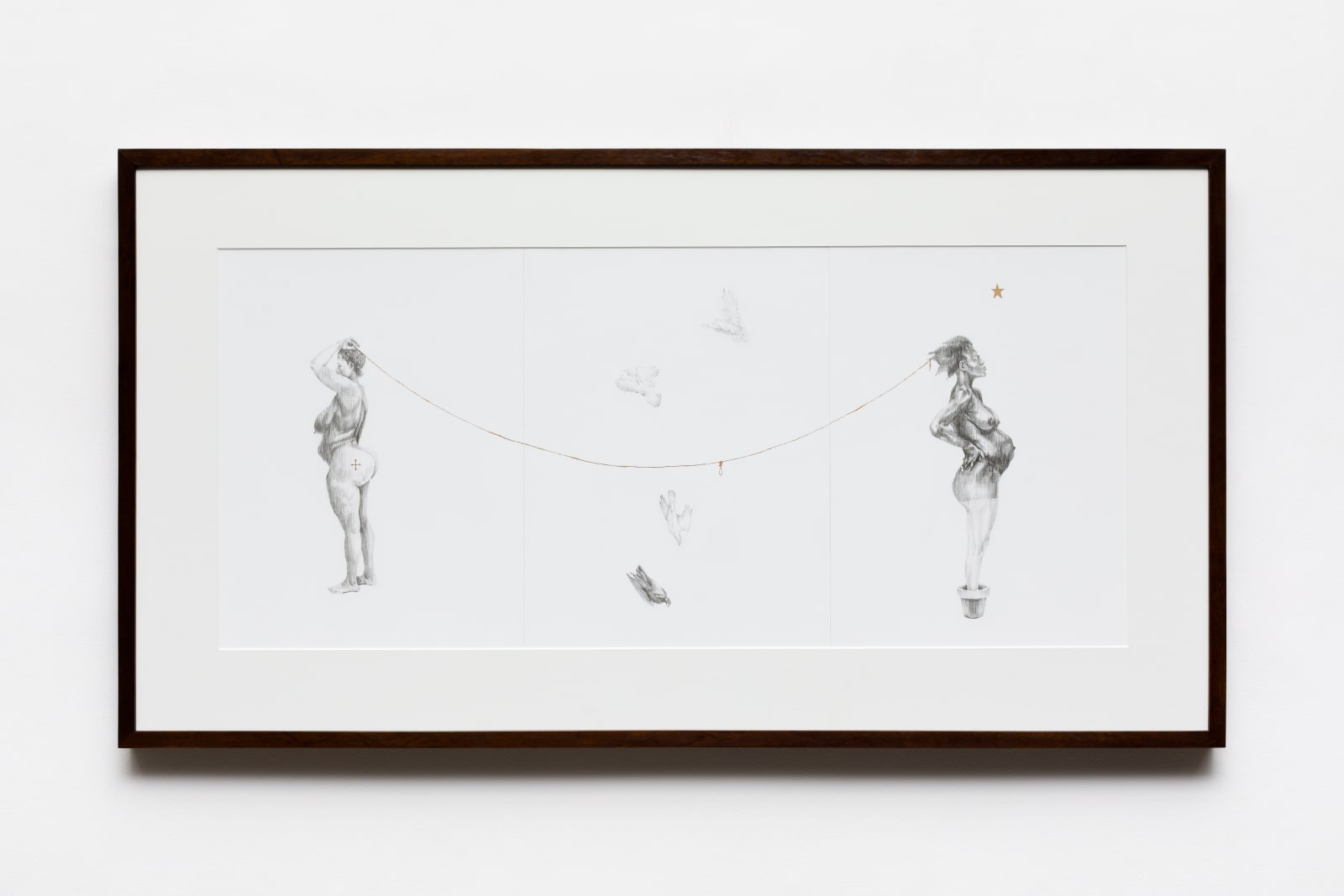Antonio Obá
grafite e nanquim dourado
15 3/4 x 35 3/8 in
It is known that Saartjie Baartman was a woman from the Hottentot ethnic group who had been servant in a Dutch farm in Cape Town. She was “convinced” by her masters to exhibit her body in the United Kingdom. This episode was the starting point of a history of wretchedness in which her body was stigmatized with racism, sexism, misogyny, as well as with the opprobrium of being an aberration to the eyes of the biased exoticism, which evaluated what was different under an animalistic perspective customary in that time. It befell that her body was submitted to a thorough process of dissection and subsequent publication in the Mémoires d'Histoire Naturelle (1817).
In a concise acceptation, the tension between the physical and symbolic death of a woman subjugated and kept hostage by an inhumane context, as opposite to a woman that is fully aware of her bond with this past, though standing elevated before it. It proposes the idea of an existence that is conscious of the hardship of an infertile past, however, extracts strength from this same past to create new life.
